In 2020, Cortopia Studios threw us into the absurd world of Alice in Wonderland in a well-reviewed VR narrative adventure puzzle game called Down the Rabbit Hole. Now, they’ve done it again.
Escaping Wonderland is a standalone spiritual sequel that builds upon the many things Down the Rabbit Hole did right. It’s an inventive, beautifully crafted, and disarmingly earnest game that will equally charm fans of the source material and those who couldn’t care less about chronologically challenged rabbits or grinning purple cats.
The Premise
Molly awakens in a mysterious wonderland, unaware of how she got there and unable to remember anything about herself or her past. She only knows she’s scared, lonely, and desperately wants to go home.
Before long, a friendly, bespectacled mole tells her (and the player) there’s an incredible machine that can send Molly home. However, a winged thief broke the machine and made off with four of its key components, and four antagonistic denizens of Wonderland now possess these parts. If Molly hopes to return home, she and the player must overcome her fear and self-doubt, defeat these villains, retrieve the parts, and rebuild the machine.
It's a compelling enough premise for a video game, providing ample MacGuffins to chase and collect. But where Escaping Wonderland establishes itself as something special is in its contextual storytelling and its thematic undercurrent. This isn’t just a game about beating the bad guys of Wonderland. In addition to the solid gameplay and high-end presentation, there exists a cerebral and emotional element to Molly's story that's deftly implemented and surprisingly profound.
The game is as much about confronting our own inner critic as it is about defeating external enemies. By the end of the game, Wonderland has changed, and Molly with it. She’s learned much about herself. Her wishes, hopes, and motivations have changed, her life’s philosophy is different, and if the player has any sort of heart, it would be hard not to also be changed - if only a little, and for just a short while.
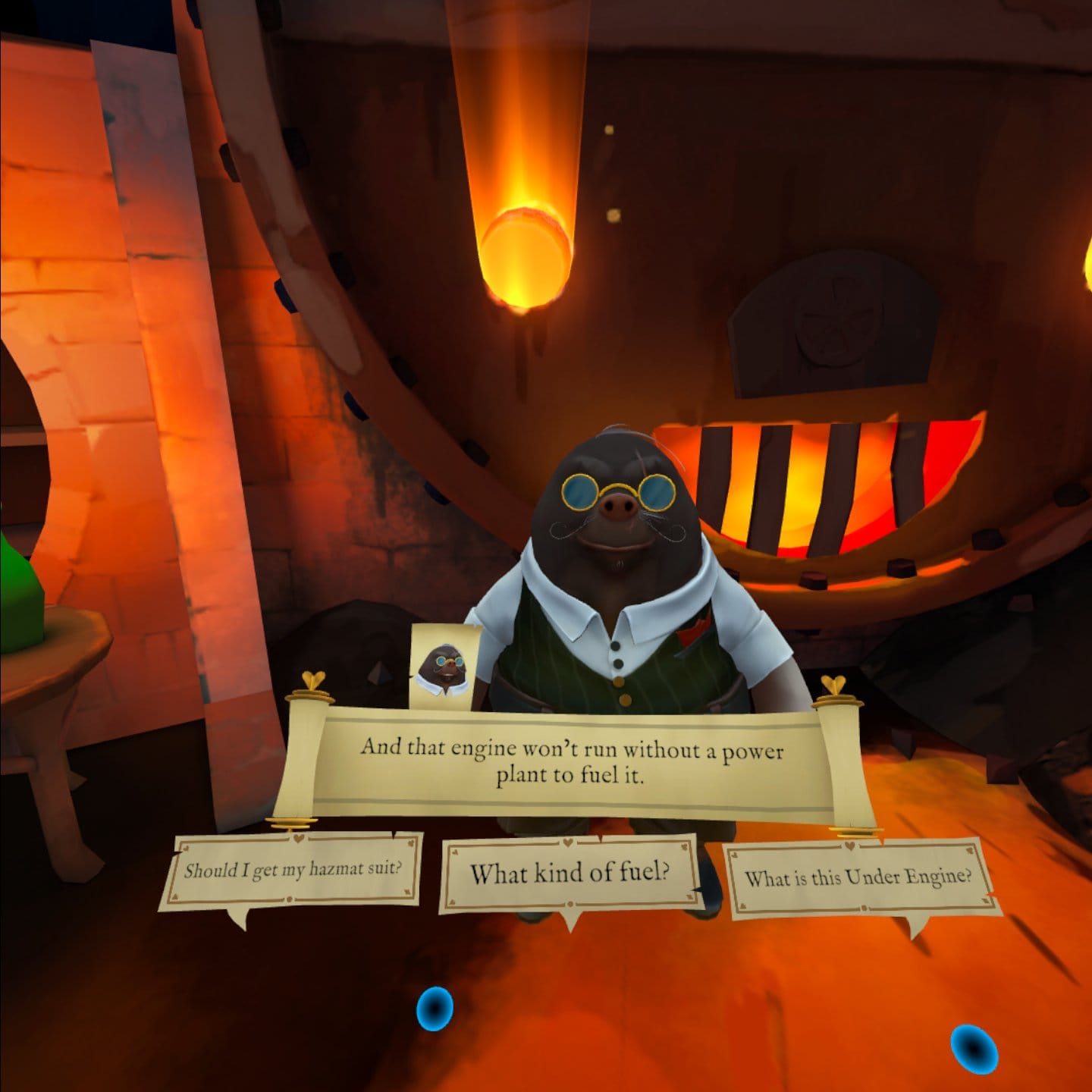
Sights and Sounds
Escaping Wonderland’s visuals are gorgeous.
The characters are richly detailed, alive with personality, and beautifully animated. With very few exceptions, the voice acting is superb, and every interaction is voiced in English - there are available subtitles in English, French, Italian, German, Spanish, Korean, Japanese, and simplified Chinese.
The environments are simply stunning. The game spaces are presented as living dioramas, and each diorama has been lovingly crafted with a richness of detail and a depth of quality that elevates Escaping Wonderland to the highest levels of VR immersion. Like some of the best 3D platforming VR games, from start to finish, playing Escaping Wonderland feels like we’re bebopping through the best part of a Disneyland dark ride.
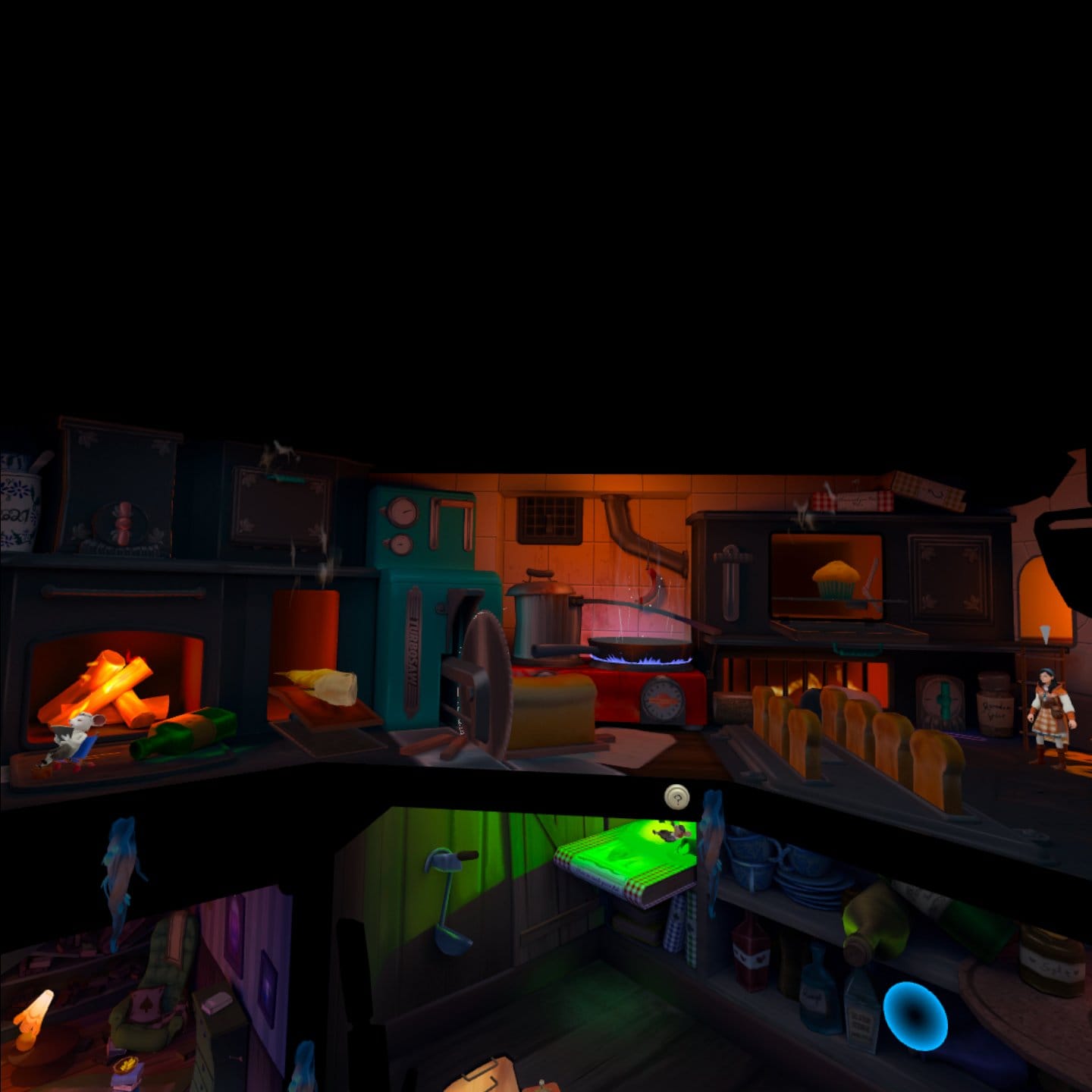
The developers have ensured that each locale is dripping with detail, that each environment is one that we want to explore. There are secret scraps of photos that can be collected into a scrapbook, which is basically your pause menu, and hidden cassette tapes littered across the land. Finding these optional bits further fleshes out the contextual storytelling, allowing greater insight into the mind and heart of Molly and the people with whom she’s hoping to be reunited.
By poking around, by physically peeking and leaning this way and that, by sticking our noses into the dioramas themselves, we find not only those secret scraps and cassettes but fun Easter eggs as well.
For example, in the diamond mine area populated by sentient, overworked light bulbs, a foreman stands at a workstation behind which a corkboard stands pinned with notes and posters. Leaning closer, the posters resolve into detail: cat memes, a reference to a legendary episode of The Simpsons, and a poster of a UFO that I last saw stapled to the wall of FBI Special Agent Fox Mulder’s basement office. They’ve even hidden a Ninja Turtle in there somewhere.
Gameplay
Emotional resonance and pretty visuals aren't worth much if the video game’s not fun to play. Happily, this one is.
Escaping Wonderland is a side-scrolling 3D adventure game in which the player uses the left analog stick to guide Molly through living dioramas. Interactable objects are manipulated by reaching out and physically touching or grabbing them with either hand. In this way, the player acts as a sort of omniscient observer, controlling Molly and solving puzzles with her to progress. It’s like Moss, without combat.
When we encounter a major antagonist or a set-piece puzzle, the game pulls a neat trick; we’re shifted from the third-person perspective to a first-person perspective. In this mode, we can see what Molly sees, use her hands as our own, and use tools like a slingshot and a spectral lantern to solve problems.
One memorable puzzle saw an over-zealous royal guard, one with an extremely Arnold Schwarzenegger-like voice, demand that Molly present an identification card. We didn’t have one, so we had to make one. We found paper, a printing press, a camera shop for a photo ID, and a pencil, and we had to piece together our very own forged passport manually.
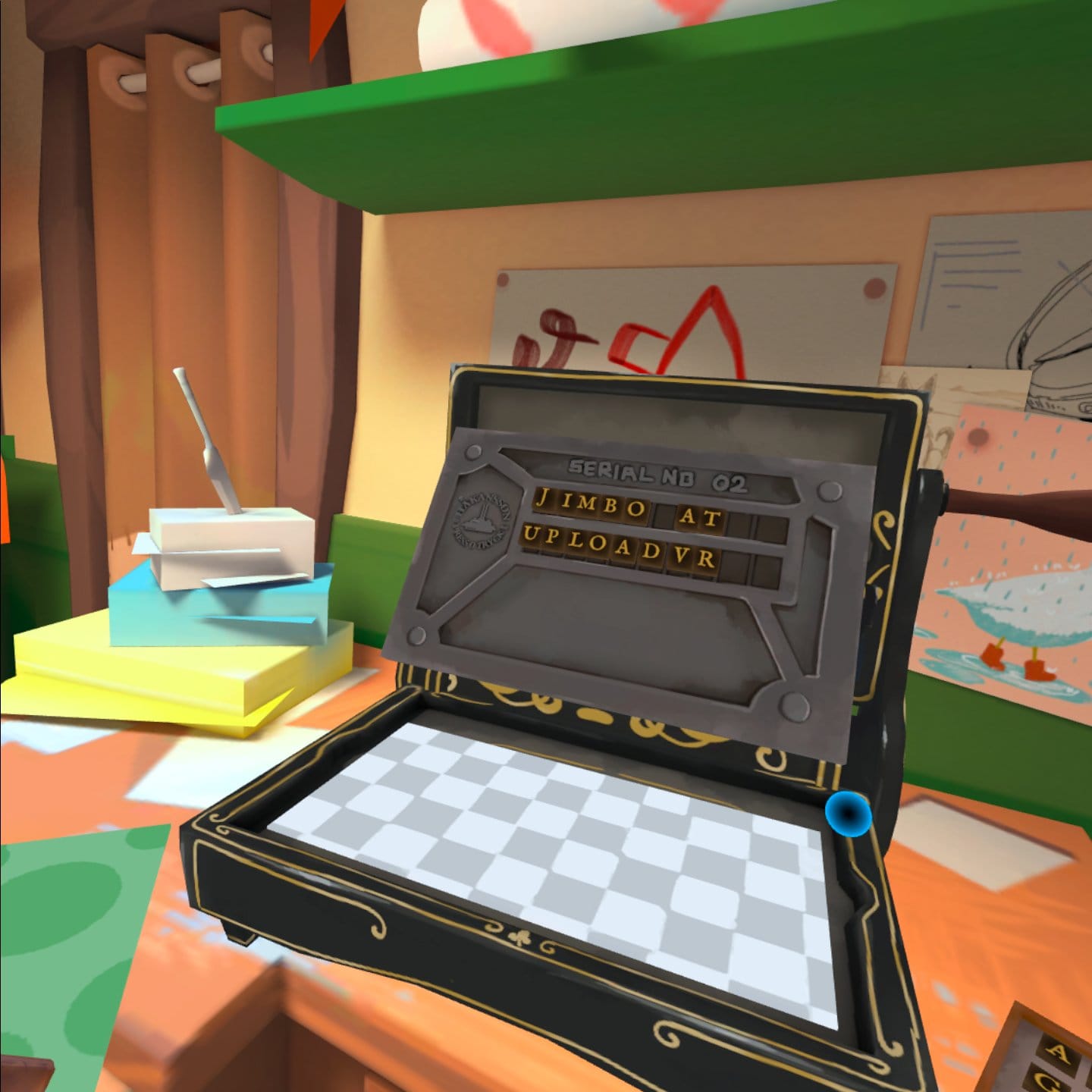
Another puzzle involved collecting enough tokens at a carnival to buy a ticket to the Queen of Hearts' Un-birthday party. Available token-earning games included whack-a-mole, a slingshot shooting gallery, and a hot dog eating contest in which the player must assemble their own hotdogs before scarfing them down as quickly as possible.
The controls are polished and intuitive, feeling entirely natural to experienced players and newcomers alike. My nine-year-old daughter caught on instantly. Motion controls are precise and accurate, traditional controls are tight and refined. When we need to shoot a target with a slingshot - which, did I mention, uses bananas as ammunition - there’s no jittering or uncanny misses. Everything works so that there’s nothing in the gameplay that I find disappointing.
The game is playable seated or standing, though movement is not necessary beyond slight leaning and line of sight adjustments. The diorama moves by grabbing hold of roots that grow from the world around us or by flicking the right analog stick. I found sitting in an office chair to be best. Given that the dioramas are arranged in a circular pattern all around the player, an office chair lets us swivel in place to follow the action.
Comfort
Escaping Wonderland uses very limited movement, so discomfort and motion sickness shouldn't be a factor for most players. Artificial stick-based locomotion allows the player to snap their position left, right, up, and down, though we're also able to smoothly glide from place to place by using roots in the environment as handholds.
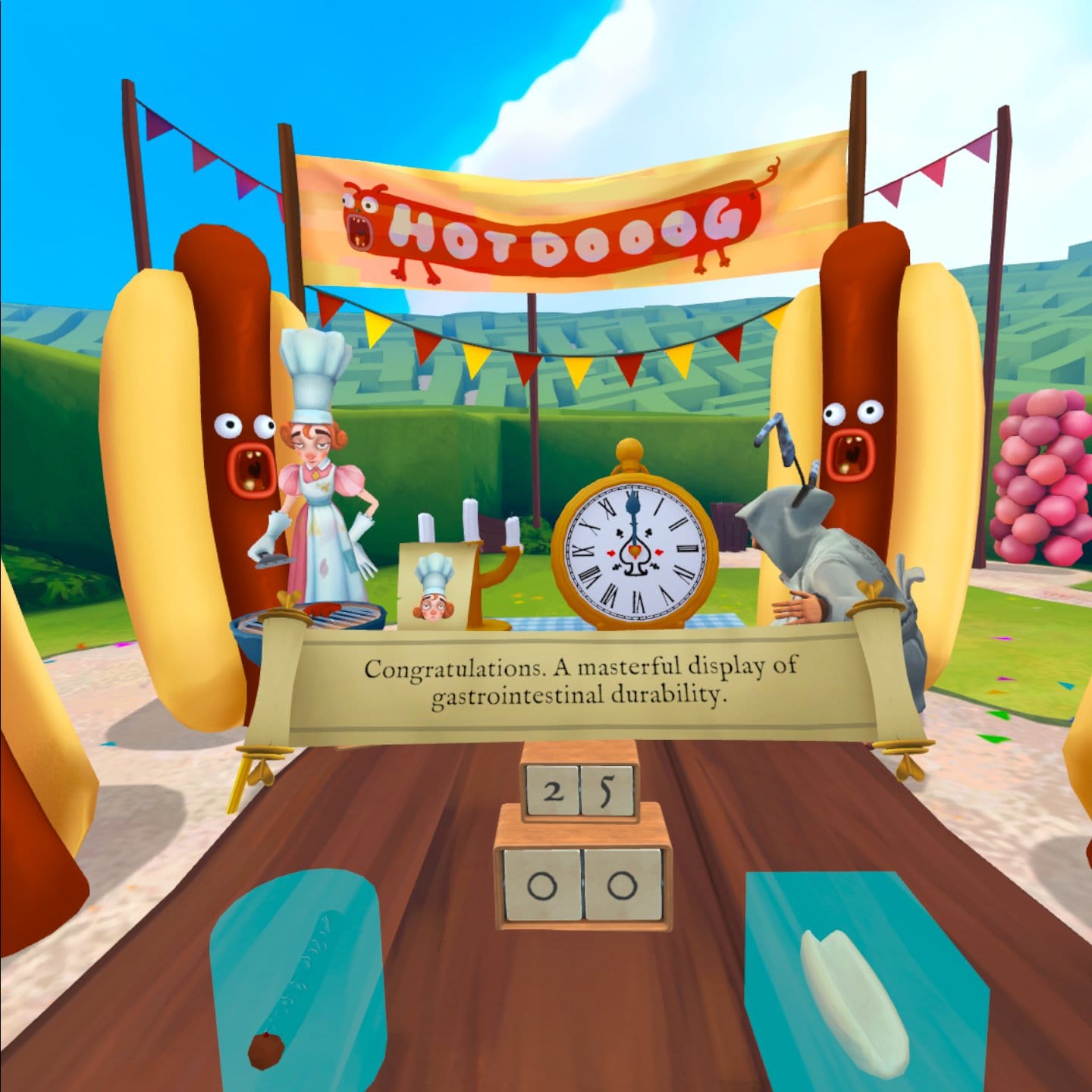
The Puzzles
The core mechanic of Escaping Wonderland is its environmental puzzles. These are varied, inventive, and usually absurd. In some instances, we’re luring a bird out of a bush so that we can pluck its tail feathers, while at other times, we’re composing rudimentary dance music using frogs as a turntable.
While some puzzles can be tricky, most aren’t very difficult, and nearly all are solvable in a few minutes. That said, a handful of the later puzzles are indeed diabolical. One in particular, in which the player must collect clock gears and then use the clock to control the flow of time, puzzled me for about ten minutes, so I can imagine that young people or casual players will occasionally feel stumped.
To help mitigate this and to ensure that the game may be enjoyed by everyone, not just anyone who grew up playing Myst, the developers have built several systems into the game to aid puzzle-solving. First, characters within the game will naturally offer subtle clues as to where to go and what to do. By talking to characters, hints occur organically.
There is also a more direct in-game hint system. At most environmental puzzle locations, a button is built into the diorama wall. Pressing this button launches three cards into our line of sight, and selecting one of these will cause the card to flip, revealing a hint. Intelligently, the first hint card is intentionally vague, hint card number two is more suggestive, and hint card three is quite direct.
For players who still find themselves struggling, there’s an even more explicit hint system. Built into the player’s scrapbook is a tab that launches directly to a playlist of developer-provided tutorial videos. These give clear and direct solutions to every puzzle in the game, arranged in the order that a player would experience the puzzles while playing. It’s a novel solution that ensures an admirable level of accessibility.
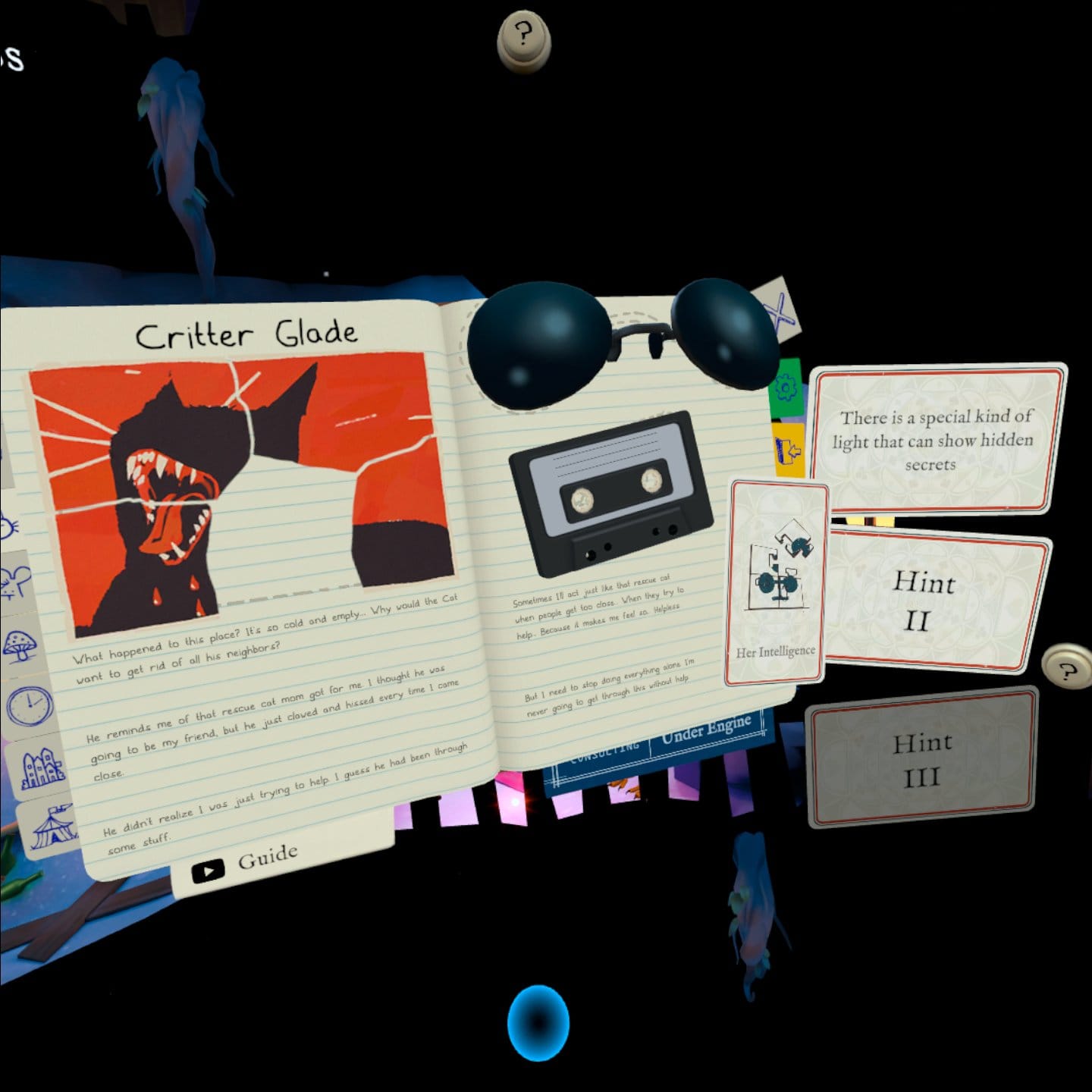
Escaping Wonderland Review - Final Verdict
Though it’s a relatively short game that took five hours in my first playthrough, I was emotionally invested and even a bit moved by the time the credits rolled. Beyond the straight-ahead fun of its game mechanics and presentation, which rank with some of my favorite VR games, Escaping Wonderland is an uncommonly cathartic and emotionally satisfying puzzle adventure that shouldn’t be missed.

UploadVR uses a 5-Star rating system for our game reviews – you can read a breakdown of each star rating in our review guidelines.


























